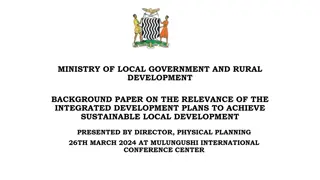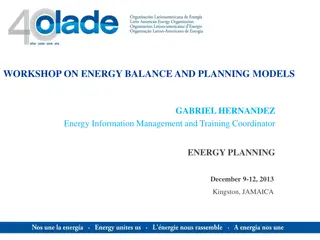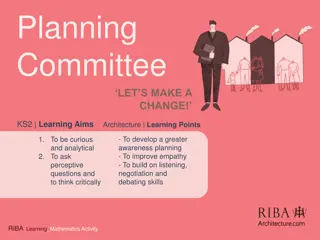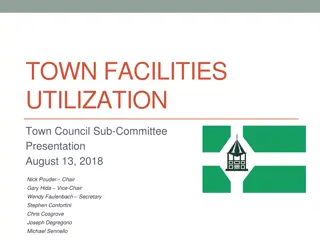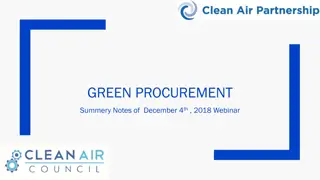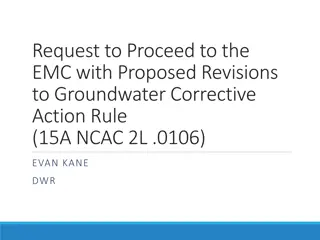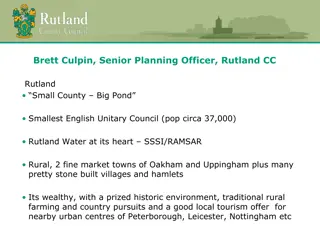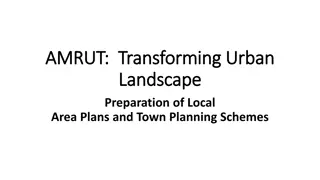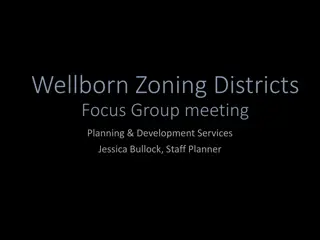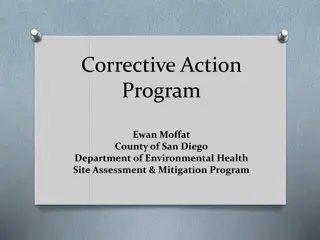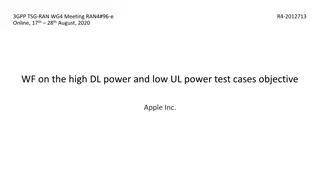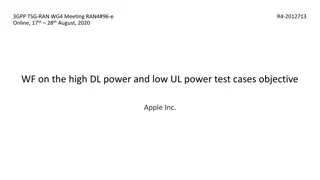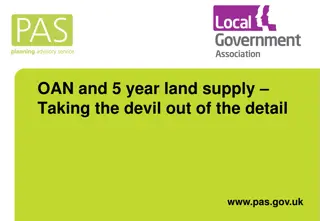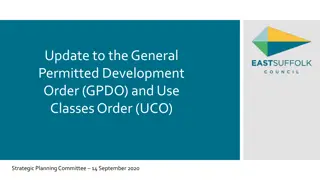Understanding Development and Permitted Development in Town Planning
Development in town planning encompasses a wide range of activities, from building and engineering to changes in land use. Permitted Development under the General Permitted Development Order grants deemed planning permission for specific types of development. Schedule 2, Part 1 outlines Classes A-H for development within the curtilage of a dwelling house, including alterations and improvements. Examples of Class A permitted extensions include single and two-storey rear extensions and new windows and doors.
Uploaded on Sep 09, 2024 | 0 Views
Download Presentation

Please find below an Image/Link to download the presentation.
The content on the website is provided AS IS for your information and personal use only. It may not be sold, licensed, or shared on other websites without obtaining consent from the author. Download presentation by click this link. If you encounter any issues during the download, it is possible that the publisher has removed the file from their server.
E N D
Presentation Transcript
Development The Statutory Definition of Development The carrying out of building, engineering, mining or other operations in, on, over or under land; or the making of any material change in the use of buildings or other land . Town and Country Planning Act 1990 Section 55 Works that do not comprise development include, but are not limited to: - interior alterations - building operations which do not materially affect the external appearance of a building. - a change use of land or buildings, where the before and after use falls within the same use class.
Permitted Development ALL DEVELOPMENT NEEDS A PLANNING PERMISSION BUT development which is permitted under the General Permitted Development Order ( PD ) gets a DEEMED PLANNING PERMISSION (LPAs grant express planning permissions) these rights apply nationally (but are restricted in some areas, e.g. Conservation Areas but NOT in the Green Belt) they can be removed by the Authority (by condition or Article 4 Directions ) - if there are good reasons
Permitted Development cont 19 Parts and numerous Classes covering a wide range of development may be subject to conditions, as with a normal planning permission notification of some forms of development (agriculture, telecoms, larger home extensions, some change of use) to see if planning permission is needed or to consider a limited set of criteria Examples: house extensions, walls and fences, garages etc. temporary buildings and use agricultural buildings and operations some material changes of use minor works by statutory undertakers
Schedule 2, Part 1, Classes A H Development within the curtilage of a dwelling house Class A- Enlargement, improvement or other alteration of a dwellinghouse Class B- Additions etc to the roof of a dwellinghouse Class C- other alterations to the roof of a dwellinghouse Class D- Porches Class E- buildings etc incidental to the enjoyment of the dwellinghouse Class F- Hard surfaces incidental to the enjoyment of a dwelling house Class G- Chimneys, flues etc on a dwellinghouse Class H- microwave antenna on a dwellinghouse
Class A- Enlargement, improvement or other alteration of a dwellinghouse Types of extensions and alterations permitted: single and two storey rear extension (including conservatories) Prior Notification for single storey larger house extensions Detached House- between 4-8 metres Any other houses- Between 3-6 metres Single storey side extensions Insertion or new Windows and doors
Class B- Additions etc to the roof of a dwellinghouse Includes: Dormer Windows Hipped to gable extensions Restrictions- volume, can t be on principal elevation and front a highway and can t exceed height of the existing roof. http://tse1.mm.bing.net/th?id=OIP.M2efc70c0905a903c6832cf126941b137o0w=300h=188c=0pid=1.9rs=0p=0r=0 http://tse1.mm.bing.net/th?id=OIP.M755ea7f08f98bda5ab4e0d9608057b8ao0w=300h=225c=0pid=1.9rs=0p=0r=0
Class C- other alterations to roof of a dwellinghouse This Class covers things such as rooflights Development is not permitted by Class C if the alteration would protrude more than 0.15 metres beyond the plane of the slope of the original roof when measured from the perpendicular with the external surface of the original roof; it would result in the highest part of the alteration being higher than the highest part of the original roof; or it would consist of or include (i) the installation, alteration or replacement of a chimney, flue or soil and vent pipe, or (ii) the installation, alteration or replacement of solar photovoltaics or solar thermal equipment. Conditions of Class C any window located on a roof slope forming a side elevation of the dwellinghouse must be (a) obscure-glazed; and (b) non-opening unless the parts of the window which can be opened are more than 1.7 metres above the floor of the room in which the window is installed.
Class D- Porches Adding a porch to any external door of your house is can be permitted development, provided the following limits and conditions area met: 1. Ground area of porch (measured externally) not to exceed 3 square metres 2. Highest part of porch not to exceed 3 metres 3. No part of porch to be within 2 metres of any boundary that fronts a highway
Class E- Buildings etc incidental to the enjoyment of the dwellinghouse The building must be Incidental- non habitable shed, garage, green house, summer house, swimming or other pool or a container used for domestic heating purposes for storage of oil or gas. Can not include habitable accommodation: Bedroom, Kitchen, bathroom Can t be forward of a wall forming principal elevation (of original house) Can t cover more than 50% of curtilage (subject to it remaining incidental in size) Can t exceed more than 4 metres in height if within 2metres of boundary can only be 2.5metres. Eaves height can t exceed 2.5metres in all cases Can t be built within the curtilage of a listed building Please Note: Conversion of existing outbuildings may not be development
Other Classes and matters: Class F- Hard surfaces incidental to the enjoyment of a dwelling house Class G- Chimneys, flues etc. on a dwellinghouse Class H- microwave antenna on a dwellinghouse Raised platform Balconies
Part 2 Minor Operations Class A- The erection, construction, maintenance, improvement or alteration of a gate, fence, wall or other means of enclosure Class B- Means of access to a highway (unclassified road) Class C- Exterior painting
Part 14- Renewable Energy on domestic premises Class A and B installation of solar equipment Class C installation or alteration etc of ground source heat pumps Class D installation or alteration etc of water source heat pumps Class E installation or alteration etc of flue for biomass heating system Class F installation or alteration etc of flue for combined heat and power Class G installation or alteration etc of air source heat pumps Class H and I installation or alteration etc of wind turbine
Dwellinghouses- C3 Use Class Uses as a dwellinghouse (whether or not as main residence) by: A single person or by people to be regarded as forming a single household; Not more than 6 residents living together as a single household where care is provided for residents; or Not more than 6 residents living together as a single household where no care is provided to residents PD change to C4- Houses in multiple Occupancy
C4- Houses in multiple Occupancy Use of a dwellinghouse by 3-6 residents (unrelated) as a house in multiple occupation (HMO) Large HMOs - (more than 6 residents (unrelated)) are classified as sui generis
Change of uses to dwellings C3 Class G- retail or betting office or pay day loan shop to mixed use (with up to 2 flats) Class L- Small HMOs to dwellinghouses and vice versa Class M- retail, takeaways and specified sui generis uses to dwellinghouses (subject to prior approval) Class N- specified sui generis uses to dwellinghouses (subject to prior approval) Class O- offices to dwellinghouses (subject to prior approval) Class P- Storage or Distribution centre to dwellinghouses (subject to prior approva) Class PA- premises in light industrial use to dwellinghouse (subject to prior approval) Class Q- Agricultural buildings to dwellinghouses (subject to prior approval) Useful link: https://lichfields.uk/media/2913/guide-to-use-classes-order-in-england.pdf
Any Questions? Useful Information and links: www.planningportal.co.uk (Interactive guides: https://interactive.planningportal.co.uk/) https://www.gov.uk/government/publications/permitted- development-rights-for-householders-technical-guidance (Government Technical Guidance for Householders) Contacts: 01527 881770 newplan@bromsgroveandredditch.gov.uk
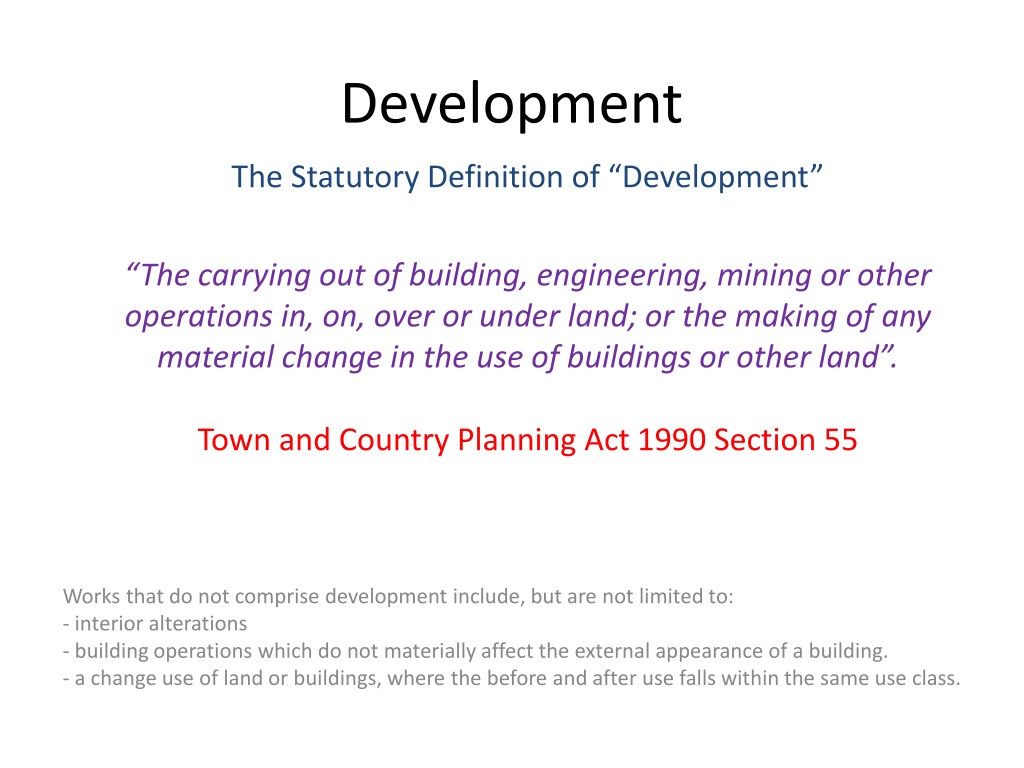

![Town of [Town Name] Real Estate Tax Rates and FY 2024 Budget Summary](/thumb/62211/town-of-town-name-real-estate-tax-rates-and-fy-2024-budget-summary.jpg)
